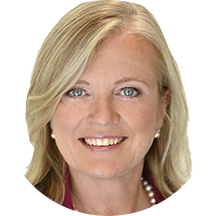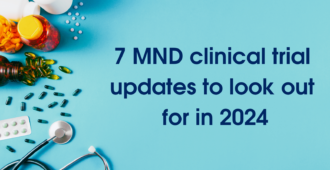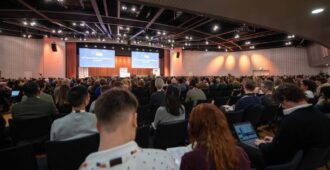This is the first in a series of three blog articles from Session 7 – Perspectives: Lessons from COVID-19 in which we heard from different speakers about how the COVID-19 pandemic has impacted their own experiences of clinical trials, research, and support within the MND community. A further blog, written by Bruce Virgo who is living with MND and who also presented during this session, will be published shortly.
Although the impact of the COVID-19 pandemic has been great, the lessons learnt have been greater and, moving forward, short-term solutions to immediate problems are evolving into long-term strategies for continuing and improving research into MND, re-evaluation of clinical trial design and providing more effective and relevant care for people affected by the disease.

Our first speaker in this session was Dr Angela Genge, from the Montreal Neurological Institute in Canada, who talked about ‘Implications for accelerating drug development and clinical trials’.
The COVID-19 pandemic saw an immediate closure of most clinical trial sites around the world. Patients who had to be present to have their therapies were not able to be seen, and staff and space within hospital settings were reassigned to provide care and space for COVID-19 patients. Shortage of appropriate personal protective equipment (PPE) meant that pulmonary function tests, such as slow vital capacity (SVC) and forced vital capacity (FVC), to measure disease progression and effectiveness of the trial drug, could not be carried out due to the risk of aerosol distribution, and in-person visits stopped. These changes meant that data was not collected, treatments were not able to be given and assessments could not be carried out. Cases of COVID-19 within the clinical setting itself also had an effect.
These challenges led to a series of adaptations which, importantly, may eventually allow researchers to offer participation in clinical trials to people much more widespread than previous practice would have allowed – geographic proximity to a clinical trial site may, as a result of COVID-19, become less of a barrier to accessing promising new therapies.
How might this be achieved?
To achieve this, clinical trial researchers are exploring:
- ways in which remote visits and remote monitoring may be carried out,
- how working with relevant groups in the community, such as GPs and community nurses, might allow critical data to be collected outside of the clinical trial site,
- how serum and blood-based biomarkers could be obtained in the home, allowing critical information to be captured and,
- alternatives to SVC and FVC as outcome measures in future clinical trials.
Going forward, we may see the increased use of remote visits – taking the trial to the participant rather than bringing the participant to the clinic. Clinical trials are already beginning to include a biomarker element in their data analysis, and this will allow for faster drug development which, in turn, will speed up the clinical trial process and help to prove the effectiveness of trial drugs more quickly. Clinical trials are becoming more adaptive, minimising the time lost between the different phases and allowing more people to take part.
In the UK
Prior to the pandemic, two adaptive platform trials were planned in the UK – MAGNET (part of TRICALS of which the MND Association is a leading participant), and MND-SMART. These were delayed due to COVID-19. MND-SMART has now started to recruit participants, with sites across Scotland and England (with more due to open shortly), and MAGNET is currently in preparation, although people living with MND may register their interest to take part.






As someone diagnosed in March 2020 with c9orf72 fALS, I feel like a year of opportunity has been lost. In spite of all my efforts to volunteer for clinical trials, I remain frustrated. I’m no slouch regarding maths, and have calculated the population size from which participants can be recruited, slimmed down by the proportion who might volunteer, who fit the selection criteria. I’m waiting impatiently, as is my very fit 28yr old son who carries the gene mutation.
I was a business improvement consultanr for a while and stand aghast that no-one dares ask ‘Why?’ relating to the time trials take. Let’s learn from Covid19 and keep on asking ‘why?’
Great Guidance Thank you for posting the valuable information